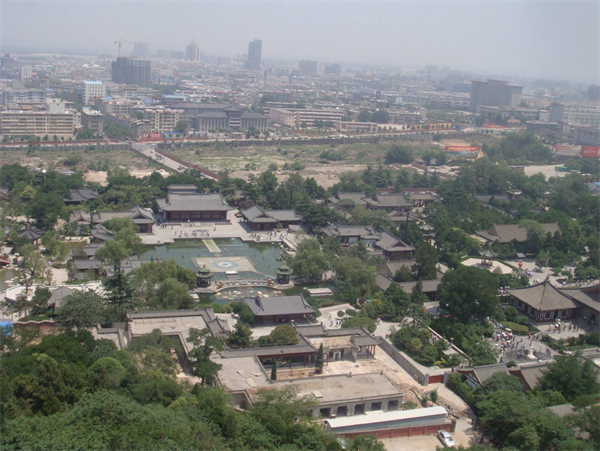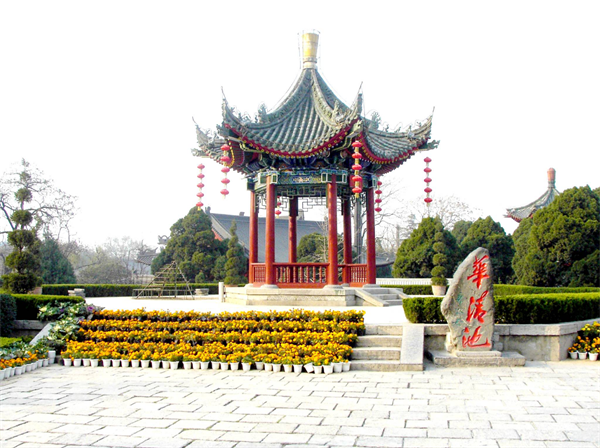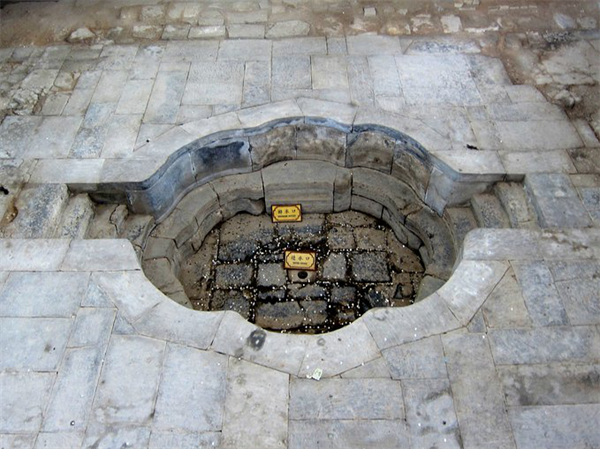Huaqing Palace (Huaqing Hot Springs)
2024-04-16 11:26:00 , Source : The Government Website of Shaanxi Province
Situated at the northern foot of Mount Li in Lintong District, 30 kilometers (18.6 miles) from Xi’an City, Huaqing Hot Spring (also called Huaqing Pool) is famed for both its dainty spring scenery and the romantic love story of Emperor Xuanzong (685-762) and his concubine Yang Guifei in the Tang Dynasty (618-907). Its long history and location among the wonderful landscapes should entice any visitor to visit.
It is said that King You built a palace here during the Western Zhou Dynasty (11th century BC-711 BC). Additions were subsequently made by the First Emperor Qing (259 BC-210BC) and Emperor Wu during the Western Han Dynasty (206 BC-24). During his reign, the Emperor Xuanzong spent dizzying amounts of his funds to build a luxurious palace, changing its name to Huaqing Hot Spring or Huaqing Palace. Over the course of 41 years in his days, he visited the palace as many as 36 times. The palace thus has a history of 3,000 years and the hot spring a history of 6,000 years! Ranked among the Hundred Famous Gardens in China, it also has the status as a National Cultural Relic Protection Unit and a National Key Scenic Area.

Entering the gate which bears the inscription 'Huaqing Chi' (Huaqing Hot Spring) by Guo Moruo, a noted literary in China, visitors are greeted by two towering cedars. By continuing inward passing two symmetrical palace-style plunge baths and turning right, you will see the Nine-Dragon Lake. Despite the fact that the lake is artificial with an area of 5,300 square meters (6339 square yards), it constitutes one of the main enchanting sceneries in the Huaqing Palace. You will see lotus floating on the water and emitting sweet fragrance, and a white marble statue of Yang Guifei - recognised as one of the four most beautiful women in ancient China - stands tall by the lake like a shy and appealing fairy. Mirrored in the lake you will see a surrounding complex of constructions interspersed with willows and rocks, including Frost Flying Hall (Feishuang Hall) in the north, Yichun Hall and Chenxiang Hall respectively in the east and west as well as Nine Bend Corridor and Dragon Marble Boat. The magnificent Frost Flying Hall used to be the bedroom of Emperor Xuanzong and Yang Guifei, with red supporting pillars and fine-patterned carving. Living in a place full of spice must have made the inhabitants invigorated and pleased.
Walking southwards through Dragon Marble Boat and several pavilions, you will find the Site of Imperial Pool, which is the only one of its kind to be discovered in China. The five remaining pools are the Lotus Pool, Haitang Pool, Shangshi Pool, Star Pool and Prince Pool. The lotus-like Lotus Pool was made for the Emperors' bath, the Haitang Pool resembling a Chinese Crabapple was intended for concubines, and the Shangshi Pool was designated for officials. It is said that the former Star Pool had no roof and nothing to cover its four sides. There, must have been possible to truly experience the eternal beauty of Yang Guifei. Nowadays, in order to protect this historical site, visitors can not use the hot spring in these pools.

Huan Garden is the former garden of the Huaqing Palace. There lies the Lotus Pavilion, Viewing Lake Tower (Wanghu Lou), Flying Rainbow Bridge (Feihong Qiao), Flying Glow Hall (Feixia Ge), and Five-Room Hall (Wujian Ting). In popular legend, the Flying Glow Hall was once the place where Yang Guifei would overlook the scenery and cool down her long hair. The Five-Room Hall was built in the late Qing Dynasty (1644-1911). It was the shelter of Empress Dowager Cixi after the Eight-Power Allied Force captured Peking in 1900, and was also the temporary residence of Chiang Kai-shek, the leader of the Chinese Nationalist Party during the world-famous Xi’an Incidence in 1936. The Huan Garden also features a large-scale mural carrying the inscription 'Yang Guifei Was Summoned to Serve the Emperor in Huaqing Hot Spring'. Composed of 90 white marbles, the mural is 9.15 meters (30 feet) long and 3.6 meters (11.8 feet) high. Depicting the scene of the feast in which Emperor Xuanzong summoned Yang Guifei, it reflects the prosperity of the Tang Dynasty. Odes of Huaqing Hot Spring are also witnesses of past politics, economy and art.

By visiting this site, you will not only enjoy the scenery but also taste the joy of imagining yourself back in the days of the Tang Dynasty.
TIPS
1. Basic info
Address: No. 38, Huaqing Road, Lintong District, Xi’an
Opening Time:
March 1 ~ November 30: 07:00 – 19:00
December 1 ~ the end of next February: 07:30 – 18:00
Tickets (Huaqing Spring + Lishan Mountain):
Peak season: 150 yuan/person
Low season: 120 yuan/person
Children under 1.2 meters in height, 65 years of age or older, enjoying special national allowances and experts and model workers who have made outstanding contributions at or above the provincial level, active servicemen, the disabled and disabled soldiers who hold their valid certificates can enjoy the ticket-free policy;
Full-time students under the age of 18, undergraduate and undergraduate, can enjoy a half-price preferential policy with a valid "student card" registered in the school.
"The Song of Everlasting Regret" performance
Showtime: March 24th-October 31st 20:00-22:50;
November 1st-March 22nd of the following year closed;
Ticket purchase instructions: At the latest, you need to purchase at 23:59 one day before the trip
2. Transportation
From Xi’an:
1. Take Tourism Bus No.5 (306), the special route bus from Railway Station to the Terracotta Warriors via Huaqingchi Station, at the East Square of Xi’an Railway Station and get off at Huaqingchi Stop.
Bus fare: CNY6
Estimated Travel Time: 45mins
2. Bus No.307 from the south gate of Tang Paradise to Huaqingchi Station.
Bus fare: CNY 7
3. Bus No.914 and No.915 also run to Huaqing Hot Springs and Terracotta Warriors, but they are not suggested to take.
4. Take a free shuttle bus at Xi’an North Railway Station to get there in an hour. You can get a boarding pass/card by showing your train ticket on the arrival day and the entrance ticket to any attraction of Lintong to board the bus.
Note: Tickets for Lintong attractions are available at the Tourists Service Center on the underground floor of the North Railway Station.
From Lintong:
Take bus No.101 from Lintong Bus Station.

Government Organizations



Other Links

Copyright@www.shaanxi.gov.cn All Rights Reserved
Registration Number:陕ICP备10004160号
